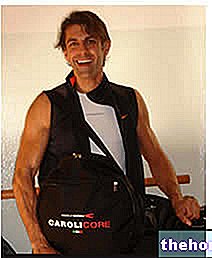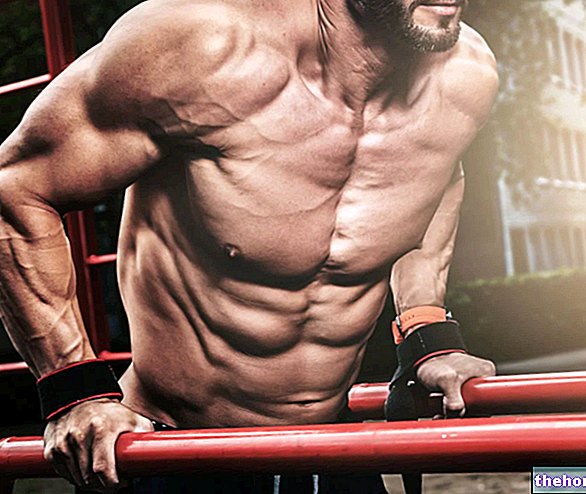Edited by Dr. Matteo Giardini
Title:
"Stabilometric-postural and motor" analysis of a group of elderly practitioners of Gentle Gymnastics, part of the municipal project "Health Program", at the Municipal Gym of the "Raggio di Sole" School in Mandriola at the Municipality of Albignasego (Padua).
Author:
Prof. Matteo Giardini, teacher of "physical activity education" at the ENAIP High School of Padua and technician of the "HumanLab" Biomechanics Laboratory at the "Villa Ferri - Center of Health and Movement" Polyclinic
Premises:
The motor activity has highlighted, with countless scientific researches, its significance (longitudynal study ACSM) with regard to the positive effects linked to the increase in motor skills (strength; Fiatarone-Singh, 2002), speed, balance, weight loss (reduction of weight) and also to the maintenance / improvement of the flexibility of the musculoskeletal system.
Other studies (Gulati et al., Circulation; Myers et al., NEJM) show that physical exercise is a "natural drug" not only for the prevention of diseases of the cardiovascular system (arterial hypertension, dyslipidemia, etc.), but also of the musculoskeletal system (Sarcopenia; Jones & Rose, 2005) and dysmorphism / paramorphism of the spine. Another aspect is linked to the huge social costs, as for falls in the elderly, which cause in most cases (51%) permanent disability; also in this context, motor activity shows its positive effects, preventing hypokinesis (NF Toraman, Br J Sports Med 2005).
We therefore wanted to monitor a gentle gymnastics course, for a duration of 90 days, maintaining the same environmental and logistical conditions and in the timing of the analyzes to be performed.
The objectives are linked to the finding of improvements in motor skills and static and dynamic balance. As regards the component linked to weight loss, significant results are not expected, since there is no specific aerobic training program.
Methods:
We studied a group of (n = 10) seniors selected consecutively, (average age = 65 years; SD = 8.5), who participated in the Gentle Gymnastics course (Tuesday and Friday) at the gymnasium of the school structure. "Raggio di Sole" in the locality of Mandriola, of the Municipality of Albignasego for a total of two hours per week.
As a working methodology, the anthropomorphic data (at the beginning and at the end of the course) of the participants was taken into account: age, weight, height, and body composition "Body mass index" [BMI], waist and hip circumference ratio , motor skills (strength, resistant strength, speed, balance and flexibility) and the postural control component for maintaining the erect position, through the "use of the" Stabilometry "analysis tool with closed and open eyes, in bipodalic support on rigid and unstable plane with "propioceptive mat", in order to analyze the activation component: 1 = neurological, 2 = propioceptive, 3 = muscular, for a duration of 25 seconds, according to the protocol of the French School of Clinical Posturology (Gagey, Weber, Bonier, et al).
The statistical processing of the data for the calculation of significance concerned the "t test with paired data" (with significance value for p <0.05).
Physical analysis test:
- with statimeter measures the height in centimeters
- with weight analysis scale in kg
- with meter analysis of the circumference in cm of waist and side
As regards the motor tests, the Senior Fitness Test (Rikli and Jones, 1999) was used, with the exception of the aerobic endurance test, for logistical problems.
- flexibility: from the sitting position go to touch the tip of the foot with the fingers of the hand
- resistant force: perform the maximum number of pushups on the legs, starting from a sitting position
- resistant force: perform the maximum number of push-ups and extensions of the forearm on the arm with a weight (dumbbell) of 2 kg in a time of 30 seconds
- dynamic balance: from a sitting position on a chair, stand up to an upright position and walk three meters, turn around and return to a sitting position in the chair in the shortest possible time
- flexibility: touching the fingers in the anatomical position above the scapular (the distance between the right and left middle fingers is measured)
Balance test:
- Romberg Tets tandem with open and closed eyes
- instrumental analysis with stabilometry in static upright position:
- eyes open on stable bi-podalic support for a time of 25 seconds
- eyes closed on stable bi-podalic support for a time of 25 seconds
- eyes open on unstable bi podalic support, on a propioceptive mat for a time of 25 seconds
- eyes closed on unstable bi podalic support, on a propioceptive mat for a time of 25 seconds
Results:
After the three months of training the course participants highlighted a significant change regarding some motor tests:
1) the right vs left backstrech test showed a decrease in the distance between the fingers, from 13.65 Cm to 3.9 Cm (p <0.024), while the left vs right backstrech test showed a change from 18.8 Cm to 4.15 Cm ( p <0.001).
2) Postural stabilometric tests:
bipodalic support on a propioceptive mat, eyes open and antero-posterior pendulation, significant reduction of the energy used to maintain posture from to (P <0.05)
bipedal support on a propioceptive mat, eyes open and medium lateral oscillation, a reduction that approaches significance with a reduction in neurological activation from a (P <0.06) and a reduction in the propioceptive component from a (P <0.06)
bipodalic support on a propioceptive mat, eyes open and medium lateral oscillation, with a reduction, which approaches the significance, of neurological activation from a (P <0.06) and reduction of the propioceptive component from a (P <0.06)
bipodalic support on a stable surface, with open eyes, in antero-posterior swing, there is a greater recruitment of the propioceptive component, with values approaching significance (P <0.07), even the neurological component sees a reduction in its activation (P < 0.07)
The integral data of all tests are shown below in "Table 1".
Body Composition Test Results:
65,00
160 Cm
69,73Kg
106.65cm
88.30Cm
0,82
27,45
8,51
0.06cm
11.43Kg
12.61cm
14.99Cm
0,05
5,50
65,00
160 Cm
68.73Kg
104.55cm
88.64cm
0,85
27,17
8,51
0.06cm
11.43Kg
13.66cm
13.42cm
0,08
5,39
P = NS
P = NS
P = 0.32
P = 0.42
Motors Test:
6.70 Seconds
7cm
12,7
18,9
20,2
13.65 Cm
18.8 Cm
2.252 Seconds
10.93 Cm
1,41
2,37
3,25
8.00 Cm
8.41 Cm
6.21 Seconds
-0.2 Cm
14,55
20,88
22,11
3.9 Cm
4.15 Cm
1.3 Seconds
3.00 Cm
3,00
2,42
1,83
9.66 Cm
8.95 Cm
0,48
0,123
0,095
0,085
0,123
0,024
0,001
Balance Test:
0
0
0,4
0,5
0
0
0,51
0,52
0
0
0,3
0,2
0
0
2
Stabilometric tests:
SECOND TEST AND FIRST TEST (STABLE FLOOR WITH OPEN EYES)


SECOND TEST AND FIRST TEST (STABLE FLOOR WITH CLOSED EYES)


SECOND TEST AND FIRST TEST (UNSTABLE PLAN WITH OPEN EYES)


SECOND TEST AND FIRST TEST (UNSTABLE PLAN WITH CLOSED EYES)


Discussion:
Recent studies have shown that motor activity can be used as an effective means of preventing pathologies of the most varied medical specialties (cardiological, orthopedic, physiatric, pneumological and posturological). , such as to prevent the risk of falls in the elderly. In fact, a deterioration of the balance control system (propioceptive and neurological), leads to instability of locomotion and in the movements of daily life. Another important characteristic concerns the improvement of the values of resistant force, necessary for the conduct of daily life operations. , but also the flexibility of the muscle-tendon system for the prevention of degenerative and traumatic pathologies to the ligament system.
In our study we observed two subjects with abnormal response to the Stabilometric and Motor tests, which influenced the statistical processing, lowering the significance index.
We believe that these anomalous behaviors should be evaluated in future studies, in order to observe two subgroups with different motor and balance characteristics.
Conclusions:
It has been observed that a short period of training (90 days, 20 sessions of Motor Activity), can lead to significant improvements in my tendon flexibility (Backstrech test distance left vs right hand = from 18.8 Cm to 4.15 Cm with p <0.001; Backstrech test of right hand vs left hand distance = from 13.65 Cm to 3.9 Cm with p <0.024) and in maintaining balance, with observation of antero-posterior pendulation with open eyes and stable bi breech support are observed values close to significance (p <0.07), with an increase in the neurological activation component (76.21% to 83.82) and the propioceptive component (p <0.07) which is reduced (from 22.66% to 15.329%). propioceptive ", there is a significant reduction (p <0.05) of the" energy used to maintain the balance from (486Joule to 295Joule) and values close to the significance (p <0.06) of the neurological activation which passes from (76.36% to 85.65% ) and the propioceptive component (p <0.06) which p assa from (22.91% to 13.93%).
Limits:
The main limitations observed by the study are the low number of subjects observed and the small number of sessions foreseen by the "Health Program" project.
Thanks:
Municipality of Albignasego
"HumanLab" Biomechanics Laboratory at the Medical Clinic Ferri - Center for Health and Movement directed by Dr. Marino Baldo, Physiatrist
ASD RES and its President Prof. Giuseppe Baro
ASD "PlusBody" Fitness Club and its President Dr. Diego Vaccari




























